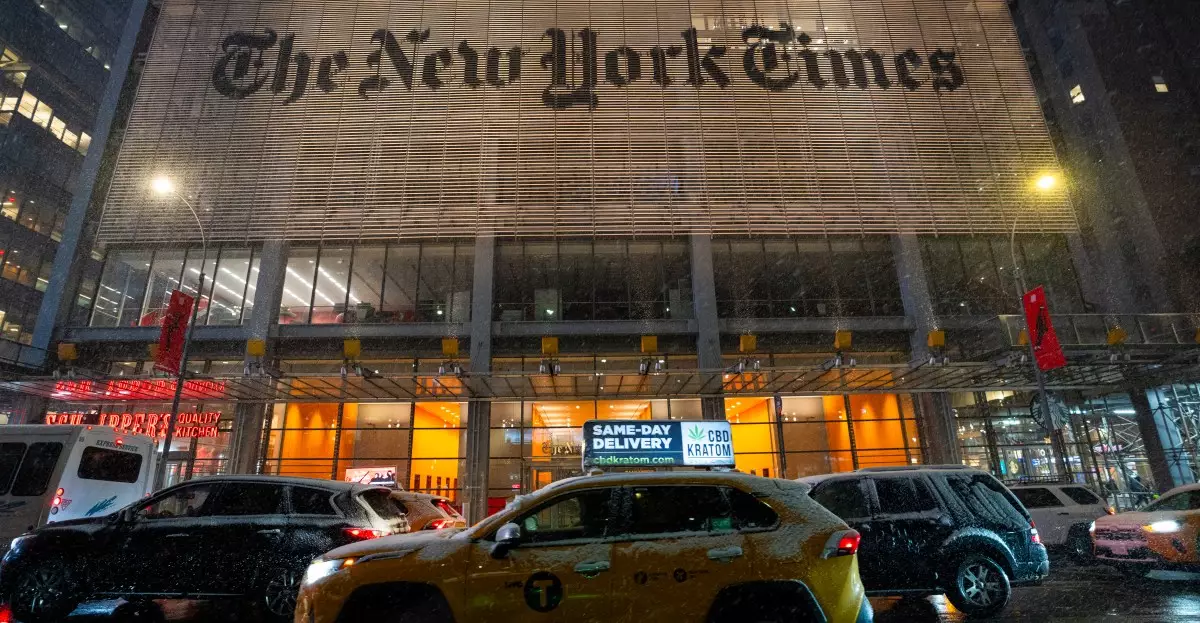The integration of artificial intelligence (AI) in journalism represents a significant shift in how editorial processes are conducted. As news organizations strive to maintain competitive edge in an ever-evolving media landscape, The New York Times (NYT) has taken noteworthy steps toward incorporating AI technology within its newsroom. Reports indicate that the outlet is not merely testing the waters, but is actively pushing its staff to engage with AI tools for various editorial tasks, including crafting headlines, editing content, and generating questions for interviews. This proactive embrace of technology showcases an ambition to optimize workflows, though it also raises questions about the implications for journalistic integrity and the role of human journalists.
In a bid to ensure that its personnel are adequately equipped to leverage these advanced tools, the NYT has committed to providing training in AI utilization. According to reports, editors and product staff will receive specific instruction on how to effectively utilize AI in their day-to-day activities. A tool dubbed “Echo” has been developed as a resource for summarizing articles and internal communications, proving beneficial in alleviating the time constraints often faced by journalists. Furthermore, guidelines were disseminated detailing the specifics of how staff can infuse AI-generated insights into their work processes. This approach not only demonstrates forward-thinking but also intends to merge human creativity with AI efficiency.
Despite the numerous advantages that AI technology can bring, The New York Times has made it clear that human oversight remains paramount. New editorial guidelines explicitly restrict the use of AI in ways that may compromise the integrity of the reporting process: no AI should draft articles, evade paywalls, or alter original reporting significantly. Such limitations are important, as they reaffirm the belief that journalism should ultimately reside in the hands of professionally trained humans. The explicit commitment to maintaining journalistic standards is manifested in statements asserting that while AI can aid in certain tasks, all outcomes need to be vetted and curated by actual journalists.
In light of the rapidly changing landscape marked by the introduction of AI, The New York Times faces additional scrutiny as it is currently engaged in a legal dispute with tech giants like OpenAI and Microsoft. The allegations that these companies may have utilized NYT content to train their AI models without appropriate permissions spotlight the complex interplay of journalism and technology. As the industry grapples with issues of copyright and content ownership, the NYT’s dual approach in adopting AI while protecting its intellectual property highlights the inherent challenges that traditional media organizations face.
The decision of a front-running publication like The New York Times to embrace AI technology reflects broader industry trends, where newsrooms worldwide are experimenting with AI to varying degrees. From minor applications such as spelling and grammar corrections to more expansive uses involving content generation, the participation of AI in journalism is gaining momentum. This phenomenon beckons a critical examination of the ethical implications tied to AI’s utilization in news production. As AI tools become more capable, the critical question emerges: At what point does reliance on AI present a risk to the core values of journalism, namely accuracy, objectivity, and the human touch?
The ongoing incorporation of AI into The New York Times sets a precedent for the future of journalism, as the industry navigates an environment where technological innovation and traditional reporting coexist. As organizations seek to enhance their reporting capabilities through AI, it is crucial to ensure that the essence of journalistic integrity remains unyielding. The NYT’s careful balance of human accountability and AI assistance illustrates a model that other news outlets may follow; yet, it also serves as a reminder of the vigilance required to uphold the standards that define quality journalism amidst the risks posed by emerging technologies. The roadmap forward for journalism will likely involve a nuanced relationship between humans and AI, where the presiding values should always prioritize the pursuit of truth and the storytelling imperative of journalism.


Leave a Reply
You must be logged in to post a comment.